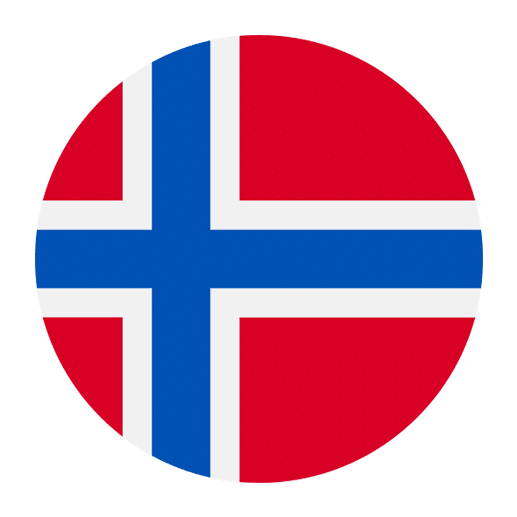Learning a new language is an exciting journey that opens doors to new cultures, people, and experiences. Norwegian, the official language of Norway, is a beautiful and melodic language that is gaining popularity among language learners. However, mastering its pronunciation can be a challenge for beginners. This article aims to provide essential tips to help you improve your Norwegian pronunciation effectively.
Understanding the Norwegian Alphabet
The Norwegian alphabet consists of 29 letters, which include the 26 letters of the English alphabet plus three additional characters: Æ, Ø, and Å. Familiarizing yourself with these extra letters is the first step in mastering Norwegian pronunciation.
Æ (æ): This letter is pronounced like the “a” in “cat” or “bat.” It has a short, sharp sound, similar to the German “ä.”
Ø (ø): The pronunciation of Ø can be tricky for English speakers. It is somewhat like the “i” in “bird” or the “u” in “burn,” but with rounded lips. Practice by saying “er” with rounded lips.
Å (å): This letter sounds like the “aw” in “saw” or “law.” It is a broad, open sound and is quite similar to the Swedish “å.”
Vowel Sounds
Norwegian vowels can be short or long, and this distinction can change the meaning of words. Here are some key points to remember:
Short Vowels: Short vowels in Norwegian are generally pronounced quickly and sharply. For example:
– “E” in “etter” (after) is pronounced like the “e” in “bed.”
– “I” in “sitte” (to sit) is pronounced like the “i” in “sit.”
Long Vowels: Long vowels are held longer and often have a clearer, more distinct sound. For example:
– “E” in “se” (to see) is pronounced like the “a” in “say.”
– “I” in “si” (to say) is pronounced like the “ee” in “see.”
Diphthongs: Norwegian has several diphthongs, where two vowel sounds are combined in one syllable. Common diphthongs include “ei” (like the “ay” in “say”) and “øy” (similar to the “oy” in “boy”).
Consonant Sounds
Norwegian consonants are generally similar to their English counterparts, but there are some differences to be aware of:
R: The Norwegian “r” is rolled or trilled, similar to the Spanish “r.” This can be challenging for English speakers, so practice is essential. Try to produce a vibrating sound with your tongue against the roof of your mouth.
K: The “k” sound in Norwegian is pronounced like the “k” in “kite.” However, before the vowels “i” and “y,” it is pronounced as a “ch” sound, like in “chicken.” For example, “kjære” (dear) is pronounced “chære.”
G: The “g” sound is usually pronounced as in English. However, before the vowels “i” and “y,” it can sound like a “y.” For example, “gi” (give) is pronounced “yi.”
L: The “l” sound in Norwegian is often softer than in English. It is produced with the tongue touching the roof of the mouth, but not as firmly as in English.
Stress and Intonation
Stress and intonation play a crucial role in Norwegian pronunciation. Unlike English, where stress can fall on different syllables depending on the word, Norwegian typically stresses the first syllable of a word. For example:
– “Norge” (Norway) is pronounced “NOR-ge.”
– “Vennlig” (friendly) is pronounced “VENN-lig.”
Intonation patterns in Norwegian can also differ from English. Norwegian is a tonal language, meaning the pitch of your voice can affect the meaning of words. The language has two main tones: high and low. Practice listening to native speakers to get a feel for the natural intonation patterns.
Practice with Native Speakers
One of the best ways to improve your Norwegian pronunciation is to practice with native speakers. This will help you get accustomed to the natural rhythm, stress, and intonation of the language. There are several ways to find language partners:
– Language exchange websites and apps, such as Tandem or HelloTalk.
– Joining Norwegian language groups or clubs in your local area.
– Participating in online forums or social media groups dedicated to learning Norwegian.
Use Language Learning Apps
Language learning apps can be incredibly helpful for improving your pronunciation. Many apps offer pronunciation exercises and feedback to help you perfect your skills. Some popular apps for learning Norwegian include:
– Duolingo: Offers a comprehensive Norwegian course with pronunciation exercises.
– Babbel: Provides in-depth lessons with speech recognition technology.
– Memrise: Uses spaced repetition and native speaker videos to help you learn pronunciation.
Listening and Mimicking
Listening to native speakers and mimicking their pronunciation is a powerful technique for language learning. Here are some resources to help you get started:
Norwegian Music: Listening to Norwegian music can be an enjoyable way to familiarize yourself with the sounds and rhythm of the language. Try to sing along and mimic the pronunciation of the lyrics.
Norwegian TV Shows and Movies: Watching TV shows and movies in Norwegian can help you understand how the language is spoken in different contexts. Pay attention to the way actors pronounce words and phrases, and try to imitate them.
Norwegian Podcasts and Audiobooks: Listening to podcasts and audiobooks in Norwegian can improve your comprehension and pronunciation. Choose topics that interest you to make the learning process more engaging.
Recording and Self-Assessment
Recording yourself speaking Norwegian and comparing it to native speakers can be a valuable exercise. This will help you identify areas where you need improvement and track your progress over time. Here are some tips for effective self-assessment:
Choose a Passage: Select a short passage in Norwegian, such as a paragraph from a book or a dialogue from a language learning app.
Record Yourself: Use your smartphone or computer to record yourself reading the passage aloud.
Compare with Native Speakers: Listen to a recording of a native speaker reading the same passage. Pay attention to differences in pronunciation, stress, and intonation.
Identify Areas for Improvement: Take note of specific sounds or words that you find challenging and focus on practicing them.
Common Pronunciation Challenges
As a beginner, you may encounter specific pronunciation challenges when learning Norwegian. Here are some common issues and tips for overcoming them:
Soft “K” and “G”: As mentioned earlier, the “k” and “g” sounds can change before certain vowels. Practice words like “kjøkken” (kitchen) and “gi” (give) to get used to these variations.
Rolled “R”: Rolling your “r”s can be difficult if you’re not used to it. Practice by repeating words like “rød” (red) and “rundt” (around). Start slowly and gradually increase your speed.
Vowel Length: Pay close attention to the length of vowels, as it can change the meaning of words. For example, “tak” (roof) and “takk” (thanks) have different vowel lengths. Practice minimal pairs to improve your awareness of vowel length.
Phonetic Exercises
Incorporating phonetic exercises into your daily practice can significantly improve your pronunciation. Here are some exercises to try:
Tongue Twisters: Tongue twisters are a fun way to practice difficult sounds and improve your articulation. Here are a few Norwegian tongue twisters to get you started:
– “Rødgrød med fløde” (Red porridge with cream)
– “Tretten triste troll i et tre” (Thirteen sad trolls in a tree)
Minimal Pairs: Minimal pairs are pairs of words that differ by only one sound. Practicing minimal pairs can help you distinguish between similar sounds. For example:
– “Tak” (roof) vs. “Takk” (thanks)
– “Lys” (light) vs. “Løs” (loose)
Shadowing: Shadowing involves listening to a native speaker and repeating what they say as closely as possible. This technique helps you mimic the rhythm, stress, and intonation of the language. Choose a short audio clip and practice shadowing it several times.
Consistent Practice
Consistency is key when it comes to mastering Norwegian pronunciation. Make a habit of practicing regularly, even if it’s just for a few minutes each day. Here are some ways to incorporate practice into your daily routine:
Daily Pronunciation Drills: Set aside a few minutes each day for pronunciation drills. Focus on challenging sounds and words.
Language Immersion: Surround yourself with the language as much as possible. Listen to Norwegian radio, watch Norwegian TV shows, and read Norwegian books.
Language Journal: Keep a language journal to track your progress and jot down new words and phrases. Recording your practice sessions and listening to them later can help you identify areas for improvement.
Seek Feedback
Receiving feedback from others is crucial for improving your pronunciation. Don’t be afraid to ask for help from native speakers, language teachers, or fellow learners. Here are some ways to get feedback:
Language Exchange Partners: Partner with a native Norwegian speaker for language exchange. Ask them to listen to your pronunciation and provide feedback.
Online Language Communities: Join online forums or social media groups dedicated to learning Norwegian. Share recordings of your pronunciation and ask for constructive criticism.
Language Tutors: Consider hiring a language tutor for personalized feedback and guidance. A tutor can help you identify specific areas for improvement and provide targeted exercises.
Embrace Mistakes
Finally, remember that making mistakes is a natural part of the language learning process. Don’t be discouraged by occasional slip-ups or misunderstandings. Embrace your mistakes as learning opportunities and keep practicing. Over time, your pronunciation will improve, and you’ll become more confident in your abilities.
In conclusion, mastering Norwegian pronunciation requires dedication, practice, and a willingness to learn from your mistakes. By familiarizing yourself with the Norwegian alphabet, focusing on vowel and consonant sounds, practicing stress and intonation, and seeking feedback from native speakers, you’ll be well on your way to achieving clear and accurate pronunciation. Remember to be patient with yourself and enjoy the journey of learning this beautiful language. Lykke til! (Good luck!)

